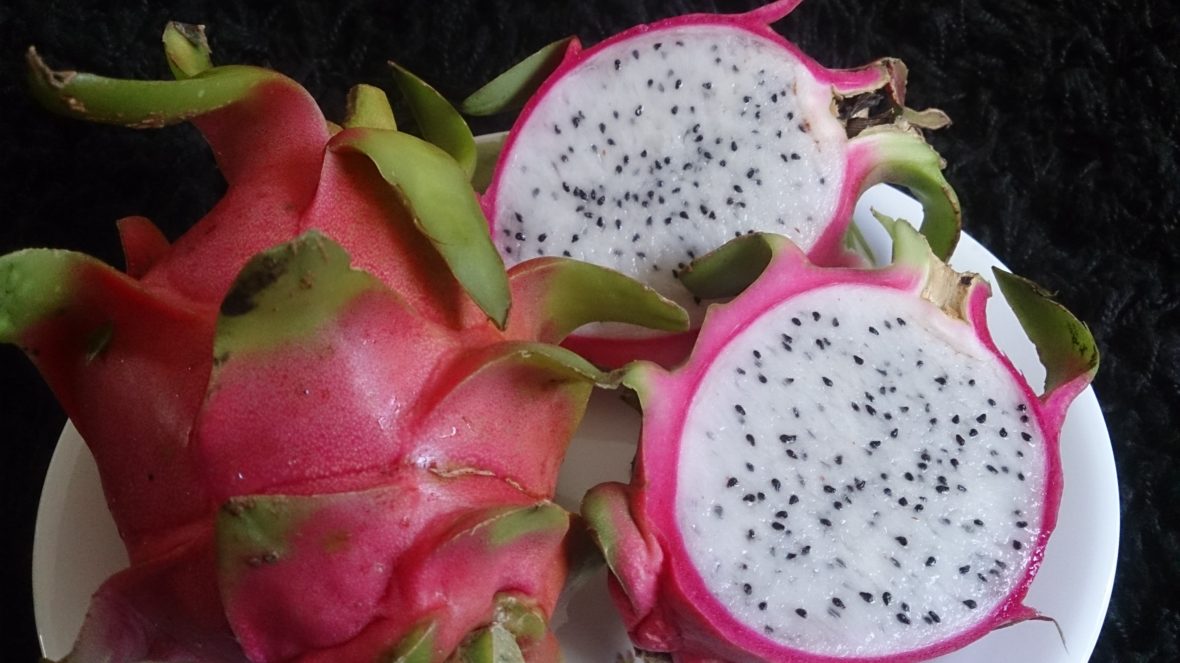Dragon fruit is the fruit of several cactus species indigenous to the Americas. While the fruit is commonly known in English as dragon fruit, reflecting its vernacular Asian names; it also goes by the name pitaya or pitahaya. Take a look below for 24 more interesting and fascinating facts about dragon fruit.
1. The names “pitahaya” and “pitaya” comes from Mexico, and “pitaya roja” in Central America and northern South America, possibly relating to pitahaya for names of tall cacti species with flowering fruit.
2. Pitahaya producing cacti of the genus Hlyocereus are originally native to Mexico. They were transplanted to Central America, probably by Europeans.
3. Dragon fruit are cultivated in Southeast Asia, the United States, Israel, Australia, Cyprus and the Canary Islands.
4. Sweet dragon fruit come from the genus Hylocereus, of the Cactaceae family, while sour dragon fruit are from the Stenocerus genus.
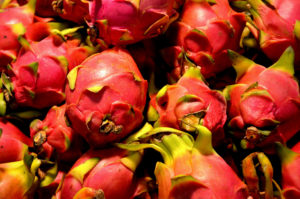
5. Dragon fruits range from 150 to 1000 grams, or 5 to 35 ounces, in weight and they’re usually an ovoid or round shape.
6. The skin of the dragon fruit is usually pink, red, or yellow in color, with spiky leaf-like appendages generally tipped with green, and a red or white colored flesh that has many small, black, edible seeds.
7. Dragon fruit has a mild flavor and is often compared to passionfruit, watermelon, raspberries and other fruit, depending on the species, and are usually sweet.
8. The large dragon fruit flowers require pollination during the night as they generally whither in the day and only last up to 24 hours, after which the fruit develops and is ready for picking from 30 to 50 days.
9. Commonly, dragon fruit is eaten fresh or as is accompanied with ice cream or other desserts. It can also be frozen or used in drinks, jams and jelly.
10. Dragon fruit is high in vitamin C and antioxidants, and is a good source of iron and fiber.
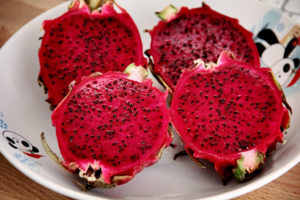
11. Because dragon fruit blooms from evening to midnight, it’s sometimes called the “moonflower” or “Queen of the night.”
12. During the night, the dragon fruit flowers are pollinated by moths and bats.
13. The best time to pick dragon fruit is when they’re mature, as they are at their height of sweetness. Mature fruits that are not harvested will continue to grow larger but not sweeter.
14. Red dragon fruit contain lycopene, the same antioxidant found in tomatoes. Lycopene helps in lowering the risk of cancer, hypertension and heart disease.
15. Dragon fruit’s seeds also contribute to its nutritional benefit. They contain protein as well as omega-3 and omega-6 fatty acids that can help prevent cardiovascular diseases. The seeds also have a mild laxative effect.
16. Taiwanese doctors are said to recommend dragon fruit to patients with diabetes, to help normalize their blood sugar levels.
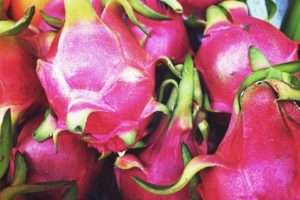
17. A mixture made of dragon fruit, honey and cucumber juice can moisturize and soothe sunburned skin.
18. Dragon fruit is usually eaten fresh but many Nicaraguans are fond of drinking a beverage made from crushed dragon fruit, water and lime juice. Another way to enjoy dragon fruit is to combine it with other fruits to make a refreshing fruit salad to mix it in a smoothie.
19. Eating too much red dragon fruit can give rise to a harmless condition called pseudohematuria, which turns your urine reddish.
20. French missionaries were the first to export the fruit from central America to south east Asia, where it was called dragon fruit. This name is supposed to derive from a legend, according to which, the fruit was the last breath exhaled by a dragon defeated in battle.
21. Street vendors at the Mercado Santa Ana habitually prepare agua fresca de pitahaya, a refreshing beverage of dragon fruit juice and water.
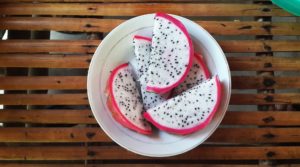
22. The Seri, a native tribe of the Mexican state of Sonora, gave the more acidic variety of dragon fruit the name of ziix is ccapxl, meaning, “the thing whose fruit is sour.”
23. A rare and rather special variety, the tyalgum purple dragon fruit is considered to be of superior quality. Its creamy white flowers, as large as a teacup saucer, produce fruits sized like a cricket ball with a brown peel.
24. The pitaya roja variety of dragon fruit stands out for the particularly bright red color of its flesh, a shade that is almost magenta.

